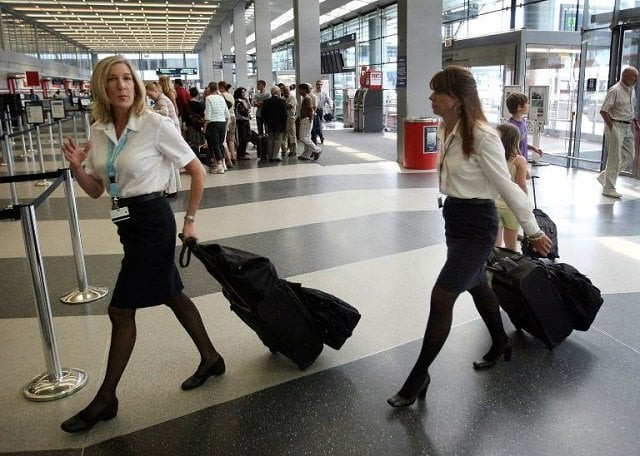Commercial flight crews show higher cancer rates, study suggests
Exposure to work as flight attendant is related to breast cancer

Taking age into account, the study found a higher prevalence of cancer in flight crew for every type of cancer examined. PHOTO: AFP
"We report a higher lifetime prevalence of breast, melanoma and non-melanoma skin cancers among flight crews relative to the general population," said Irina Mordukhovich, a researcher at Harvard T H Chan School of Public Health and co-author of a study published Tuesday in the journal Environmental Health.
"This is striking given the low rates of overweight and smoking in this occupational group," she said in a statement.
Out of 5,366 flight attendants who took part in the study, just over 15 percent reported ever having been diagnosed with cancer.
Cancer deaths decline again in US
Taking age into account, the study found a higher prevalence of cancer in flight crew for every type of cancer examined.
Some 3.4 percent of the women who flew for a living had breast cancer, compared to 2.3 per cent in the general population.
The flight-crew rate was 0.15 per cent compared to 0.13 per cent for uterine cancer; 1.0 compared to 0.70 per cent for cervical cancer; 0.47 compared to 0.27 per cent for stomach or colon cancer; and 0.67 compared to 0.56 per cent for thyroid cancer.
The risk of breast cancer was higher in women who had never had children, as well as those who had three or more.
Having no childlen was a known risk factor, noted Mordukhovich.
"But we were surprised to replicate a recent finding that exposure to work as a flight attendant was related to breast cancer exclusively among women with three or more children," she said.
"This may be due to combined sources of circadian rhythm disruption sleep deprivation and irregular schedules both at home and at work."
Male flight attendants were found to have higher rates of skin cancer 1.2 and 3.2 percent for melanoma and non-melanoma cancer, respectively, compared to 0.69 and 2.9 per cent for the adult population as a whole.
This was especially true if the attendants working before smoking on planes was banned in the United States, in 1998.
Flight crews are routinely exposed to known and probable carcinogens, including cosmic radiation from space, circadian rhythm disruption, and possible chemical contaminants.
Cancer cases rising at an alarming rate
The authors used 2013-14 data from the Flight Attendant Health Study, which has been tracking the health of selected flight crew since 2007.
This was compared to data from 23,729 men and women with similar economic status who participated in the National Health and Nutrition Examination survey during the same years.
Over 80 per cent of the flight attendants who took part in the study were women. On average, attendants were 51 years old and had been working in the profession for just over 20 years.

















COMMENTS
Comments are moderated and generally will be posted if they are on-topic and not abusive.
For more information, please see our Comments FAQ